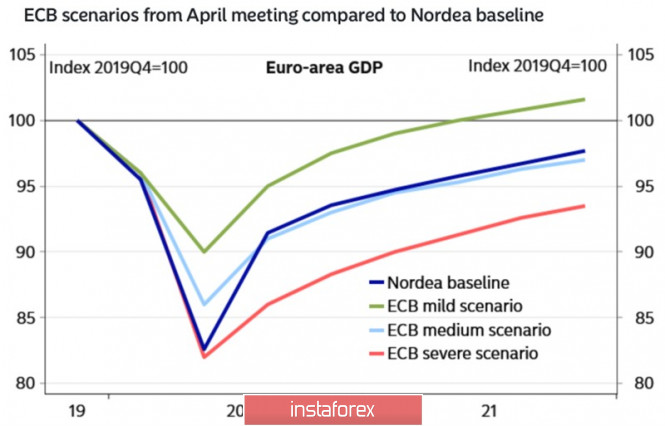
The end of spring has become a real benefit for the single European currency. In the week to May 29, it managed to show growth against the US dollar for all five trading days, even though US stock indices did not always support the "bulls" for EUR/USD. While the S&P 500 weighed what was more important, the opening of the US economy or Donald Trump's response to China for Hong Kong, the euro grew due to Germany's desire to save the Eurozone. The joint project of Angela Merkel and Emmanuel Macron became a reality even before the June EU summit. The European Commission has announced a €750 billion bond issue and an additional €1.1 trillion budget to provide all possible assistance to the countries affected by COVID-19.
The Germans, with their potential economy sagging by a maximum of 5-6% at the end of the year, a small share of public debt in GDP, a surplus budget and capital inflows to the local debt market (as it happens, during periods of global downturns, investors flee to safe-haven assets, which in Europe are German bonds) could easily cope with a recession. For comparison, according to preliminary estimates by Christine Lagarde, the Eurozone economy will shrink by 9-12%, and the ECB forecasts an increase in Italy's debt to 160%, Greece - to 200% of GDP.
Dynamics of European GDP

If Germany were to side with Austria, the Netherlands, Sweden, and Denmark, which do not want to give grants to the poor south, a split in the ranks of the currency bloc could lead to the return of Italy and other countries to their national monetary units. This did not happen, and EUR/USD rushed up on the euphoria of a large-scale fiscal stimulus and unity in the EU.
Curiously, even the expectations of the expansion of the ECB's emergency program of quantitative easing at the June 4 meeting from € 750 billion to the expected € 1,250 billion do not bother the "bulls" in the euro. Currencies react differently to the same factors in a downturn and recovery of the global economy. When it grows, monetary expansion becomes a reason for selling, on the contrary, in times of recession, the market is flooded with hopes that a large-scale stimulus will not allow GDP to sink deep.
Along with the expansion of QE, Christine Lagarde can state that the asset purchases will not be completed in December. Investors are waiting for the Frenchwoman to respond to the German Constitutional Court, although she has previously said this. The ECB is accountable to the European Parliament and is guided by the verdict of the European Court of Justice, which recognized QE as legal in 2018.
Thus, the euro is basking in the rays of glory at the end of spring, but if the US stock indices go down, the "bears" for EUR/USD may come to their senses. The main danger comes from Donald Trump, who at a press conference on May 29 will report on the response of the White House to China's aggressive policy towards Hong Kong. If his speech frightens the S&P 500, I recommend fixing part of the profit on the euro longs formed on the breakout of the $ 1.099 level. In the opposite case, positions should be held until the target is reached at $ 1.13. The Gartley pattern target is located near this mark.
EUR/USD, the daily chart
